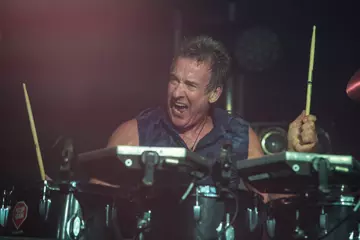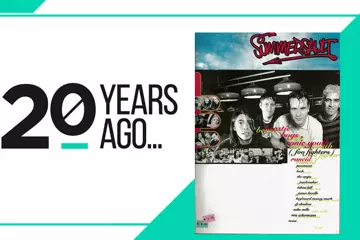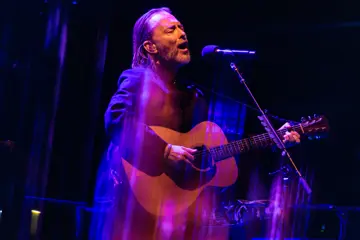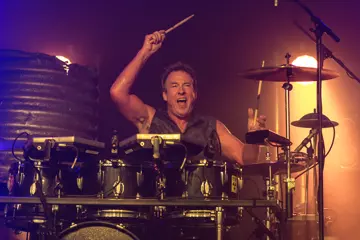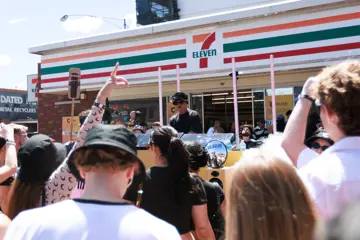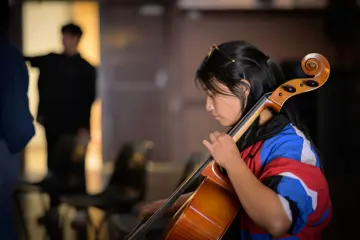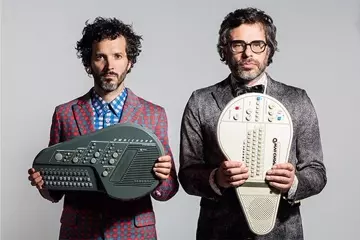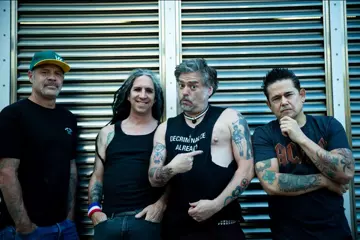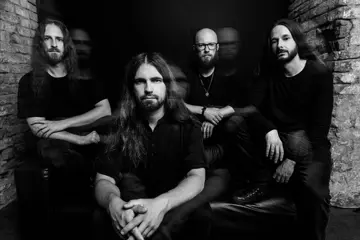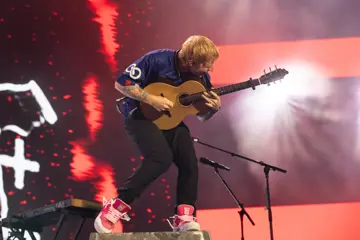In just a matter of days, Splendour In The Grass will celebrate its (slightly belated) 20th anniversary with a massive festival featuring the likes of Tyler, The Creator, The Strokes, and Gorillaz. Of course, if you’re not lucky enough to have bought a ticket, the chances are that you’ll never get to experience all that Splendour 2022 has to offer.
But it doesn’t have to be that way. After all, festivals the world over have been broadcasting their sets for years. Why, who can forget live sets from Homebake on Channel [V] back in the ‘90s, or even live broadcasts from recent international festivals such as Bonnaroo and Glastonbury? In fact, Glastonbury has been doing it right for a while now, ensuring that its events transcend cultural boundaries, becoming a true cultural ‘moment’ thanks to its broadcasts on both radio and TV thanks to the BBC.
In late June, the BBC reported that it experienced some record numbers thanks to its coverage of the festival. Content from the festival – which ran between June 22 and June 26 – was streamed 34.1 million times on the BBC iPlayer, and 2.3 million times on BBC Sounds, with 23 million of the latter figures being live streams. According to Lorna Clarke, the BBC’s Director of Music, the station provided the “ultimate armchair experience” for the festival, increasing consumption by 116% on iPlayer and 205% on BBC Sounds, when compared to the figures from the last festival in 2019.
So what does this mean? Well, maybe it’s time for Splendour In The Grass to go digital and to provide music-lovers the ‘ultimate armchair experience’ for Australia’s most prominent festival?
One person who is surprised that Splendour In The Grass hasn't delved into the game of broadcasting the entirety of the festival’s sets is Jane Gazzo. Having been a fixture of both TV and radio for decades, and having presented live music for years with shows such as Recovery and 2020’s The Sound, Gazzo is aware of the impact that broadcasting live sets can have.
Don't miss a beat with our FREE daily newsletter
“I know that for myself, seeing the broadcast of Glastonbury – not only on BBC Radio 6 Music, but also from various other BBC sites – was so very special, and it reminded me of how beautiful it was to watch live music again,” she explains. “It’s been really magical to watch those beautiful moments, especially when there's Australian artists involved such as Amyl & The Sniffers.”
Gazzo, who has herself been involved with interviewing artists on festivals such as the Big Day Out and Splendour In The Grass, admits she can see the sort of gap that an idea of this calibre could fill, with not just Australians tuning in to admire the sort of festivals that come out of this country, but countless others internationally who might soon be adding Splendour to their bucket lists.
“Because we don't have the Big Day Out anymore, Splendour has kind of defaulted into our one big national festival,” she explains. “It's become the leader of the pack, in a sense, and Splendour holds a very special place on the musical calendar, not just for music fans, but, but for artists as well.
“I'm absolutely certain that if they were to broadcast it the way that Glastonbury have broadcast their festival, it would not only have legs, but it would probably ensure longevity for the festival as well,” she adds. “It would also raise the stakes for Splendour in that it would probably gain in popularity and it may become a destination festival for international music fans in much the same way that Australians would go to Glastonbury as well.”
Thus, it does indeed help Splendour In The Grass’ potential broadcast to become a ‘cultural moment’ akin to the Olympics. As Annika Schmarsel (better known to music fans as Alice Ivy) explains, these cultural moments have been long absent from the Australian music scene, and the addition of more would help provide a sense of unity through music.
“I definitely think Australia would benefit from more cultural moments that involve music,” she explains. “A big one that comes to mind growing up was [2009’s] Sound Relief. The line-up was massive. I’m pretty sure I still own the DVD!
“It felt like the country really came together for that. It would be really great if we had more moments like that. The only ones that come to mind today are the AFL Grand Final performance and Carols by Candlelight, which is kind of sad.”
One of the biggest advantages for Splendour In The Grass broadcasting its festivities isn’t just the impact such an undertaking would have on the festival’s profile or its status on the world stage, but also the impact it can have for artists as well. After all, any emerging artist would tell you that the key to success is publicity, and with a broadcaster like the ABC and triple j in their corner, it can only mean good things for these artists in the grand scheme of things.
Adelaide’s Bad//Dreems are also on the Splendour In The Grass bill this year, playing the festival for their third time. However, appearance on a wider broadcast has the possibility of reaching those who wouldn’t necessarily seek out the band via usual channels, or might never actually catch them live otherwise.
“One of the benefits of a festival like Splendour is that you do get exposed to a wider audience that you might not always get to play in front of,” explains guitarist Alex Cameron. “So if you can expand that, all the better.
“And for a band like us, I think that we've always been a live band. That's where I think we've won a lot of fans, and that's where we really feel at home. So we’re more than comfortable to have lots more people watch us play.”
While Bad//Dreems are lucky enough to already have international attention due to a few overseas jaunts, Cameron agrees that broadcasting the festival on a platform like the internet can quickly elevate artists on the bill to heights they might not have seen previously.
This too is echoed by the aptly-titled Music Industry Blog, which noted that the Wikipedia pages for artists who performed on the Glastonbury line-up spiked both during and after their respective performances, indicating a trend of fans seeking out more information on the new artists they’ve recently discovered.
“I think Splendour’s line-up is as good as a lot of festivals around the world,” Cameron explains. “So when there are festivals like Coachella and Glastonbury, I peruse the line-up and watch it, and I'm sure that people around the world would do the same.
“Obviously they'll come for Gorillaz and Tyler, The Creator, but if they stay for the likes of Bad//Dreems, then that's good for us.”
“It would be great to have those performances documented and accessible to people around the world,” adds Alice Ivy. “Having a visual representation of your live performance in front of a home audience could lead to more Australian acts being booked to perform at overseas festivals.”
Of course, it is worth remembering that triple j have broadcast large quantities of Splendour In The Grass previously – at least in an audio format – thanks not only to their ongoing partnership with the festival, but their long-running Live At The Wireless series. For almost the entirety of the festival’s history, triple j has been on hand to broadcast highlights of the festival each year, sharing out live sets from big-name artists like Childish Gambino, Lana Del Rey, HAIM, Bloc Party, Florence + The Machine, and more for all the fans who couldn’t quite make it to the festival.
Even when they aren’t promoting a current iteration of Splendour In The Grass, triple j has continued its focus on broadcasting highlights, with the likes of their now-defunct Impossible Music Festival and 2020’s Splendour In The Past serving as a dip into the archives. As Cameron adds, the beauty of broadcasting live sets on triple j is that it not only provides access that many music fans wouldn’t have, but it provides an audio experience that is often unmatched.
“Recording live music is incredibly fraught,” he explains, “And the worst thing, as we saw through COVID is, you can't just stick a camera and a recorder in front of musicians and create something that really does them justice.
“A good example of this, however, is how well triple j do their Like A Version series. They're essentially a live recording, and the engineers that do that are superb, really. They sound amazing, and they capture the energy of performance. So if it's done, it has to be done to that level.”
Another benefit provided by broadcasting the likes of Splendour In The Grass can be seen by both those watching the festival, and even those attending the festival. Effectively, it eliminates the eternal hassle of line-up clashes, meaning that those who might need to pass up seeing the likes of Tyler, The Creator to see Mura Masa can have their cake and – for a change – eat it too.
“The other thing about festivals like Splendour is that they really stack the line-up and unfortunately, it's almost impossible to see all the acts that you might want to,” echoes Cameron. “For example, our set’s clashing with a few bands that I would personally want to watch myself.
“I think one of the downsides of a festival like Splendour is that people are going between stages like they're at a buffet and they're having a taste of everything rather than really engaging in a set from start to finish, which is how most acts really want to be experienced. So then fans have got the chance to go home and re-watch sets as they should be viewed rather than this sort of browsing of the confectionary aisle at the supermarket.”
However, there is one major barrier to the idea of broadcasting the festival, and that’s actually getting the artists on the bill to sign off on it. Sure, Glastonbury might have been rather lucky to get headline acts Billie Eilish, Paul McCartney, and Kendrick Lamar to sign off on allowing their performances to be aired, but over in Tennessee just days earlier, the team behind Bonnaroo weren’t quite as lucky.
Out of its three main headliners – J. Cole, Tool, and Stevie Nicks – only J. Cole allowed his set to be aired, and out of the other two main acts on each of the festival’s three nights, only The Chicks declined to be broadcast.
So why is this? Well, the obvious answer might be that the artist might want the performance to remain special and unique for the audience in attendance, but other factors can come into play. Artists may want creative control over what is broadcast, or – in the case of bands like Tool – they might simply not want to be broadcast in any way, instead preferring their music to speak for itself.
Of course, an argument could be made that considering they’ve already shared their performance with thousands of people in attendance at the show, it couldn’t hurt to increase those numbers. But ultimately it does come down to the artist’s discretion. Could there also be a fear that many of the big names wouldn’t want their live sets aired, thus making the experience not quite as star-studded as it has the potential to be? Well, possibly, but given the sheer roster of talent that’s on the festival, would it really matter if the headliners didn’t agree?
And even with that in mind, is there even a benefit in actually investing money in something like this when the world already has the likes of TikTok – a platform whose very existence is based around the idea of sharing shorter moments rather than lengthy moments? And what of YouTube? Given its ubiquitous nature as a broadcasting platform, should Splendour In The Grass try to compete, or simply find a way to – rather than beat them – join them? As Cameron explains, that’s likely the best way of going down the broadcast route in this age.
“I think the current landscape is made for broadcasting the festival,” he explains. “Previously, something goes up on YouTube and you're watching it on your phone through shitty speakers.
“Nowadays, at least on my TV, you've got the whole YouTube thing there, so you're watching it properly on TV. So it feels like the modern age is made for streaming festivals like this.”
“I think people that are able to attend music festivals in person and get the full experience will always preference that over watching a live broadcast, but having the broadcast for the benefit of people who can't make it, especially for those that are too young to go or unable to attend for health reasons,” explains Alice Ivy. “it would be seen as a really welcome add-on.
“Personally, I don't think a festival being broadcast negatively affects the experience of being there in any major way. Sharing Splendour’s unique qualities around the world would give the festival a lot of exposure and perhaps tempt even more international artists to route their tours through Australia and play Splendour In The Grass.”
So what does the future hold for the idea of streaming Splendour In The Grass? We reached out to the Splendour team for comment on this story, though they were unable to weigh in due to the organisation of this year’s festival, so we can’t speak on their behalf about current or future plans.
But the facts do seem to indicate that, across the board, it seems like a major potential win for a festival to step up and broadcast as much of its festivities to the outside world. Not only does it raise the festival’s profile on the local and international stage, but it provides essential exposure for its artists, and it can help to ensure a greater experience for music fans both able and unable to attend the event.
“I can only see benefits for a festival like Splendour In The Grass to broadcast its sets,” adds Jane Gazzo. Given how well the likes of Glastonbury, Bonnaroo, and Coachella have been performing when it comes to their live-streams, it seems as though it’s nothing but benefits. So, maybe it’s time to broadcast Splendour In The Grass? Let’s see what next year holds.

